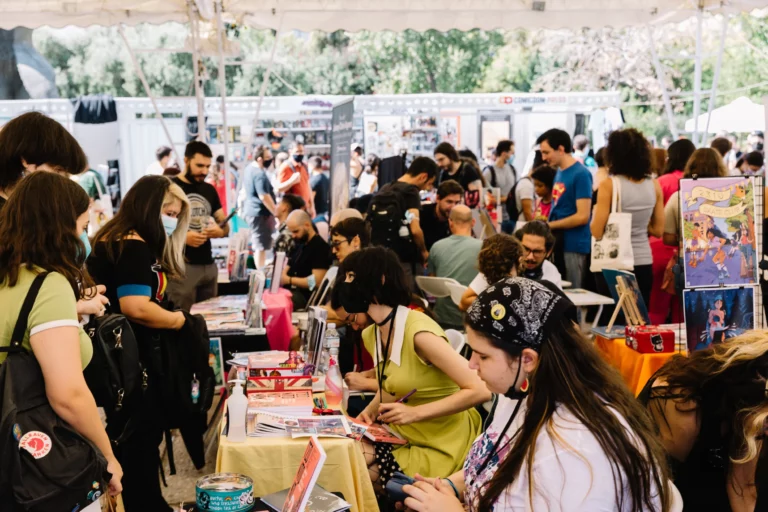Barrio Comparsa [‘neighborhood parade’] was founded in 1990 in the Manrique Oriental area of Medellín by Luis Fernandez García and five of his friends. It was a time when large areas of the city were still heavily ruled by drug-related criminal activities associated with the cartel of Pablo Escobar Gaviria, his competitors and his paramilitary opponents.
It would be exaggerated to claim that Barrio Comparsa single-handedly turned Medellín from one of the world’s most dangerous cities into the comparatively safer place it is today. Yet, in the company’s own words the ‘Ludic Methodology’ it developed and implemented over the past 23 years contains an explicit peace-oriented social change agenda:
“We generate a new type of leadership based on stimulating human sensitivity, creativity, cultural management and facilitation, citizens participation, community self-management, interculturality and introducing paradigms that break down lack of self-confidence, exclusion, fear and resistance to participation. We do this by involving the population and engaging them to become agents of large-scale transformation that contributes to personal and collective growth and the consolidation of democracy and a culture of peaceful coexistence in the country.”
Barrio Comparsa was one among many other participatory grassroots initiatives connected to the arts, health, education and religious sectors of Medellín and that was loosely coordinated and supported under a city-wide policy entitled del miedo a la esperanza [‘from fear to hope’]. A recent report suggests that drug-related criminality continues to thrive in Medellín and that the worst violence may have simply shifted to other urban areas, particularly to downtown. There seems little doubt, however, that over the years Barrio Comparsa has had a positive influence on the lives of countless young people in its own neighbourhood – and later in other parts of the city.

Héctor Aristizábal
South America, Colombia

Matemurga
South America, Argentina, Buenos Aires

Los angeles poverty department
North America, United States, Los Angeles

Beijing Theatre
Asia, China, Beijing

Amparo González Sola
South America, Argentina, Buenos Aires

CTO-Maputo Centro de Teatro do Oprimido
Africa, Mozambique

